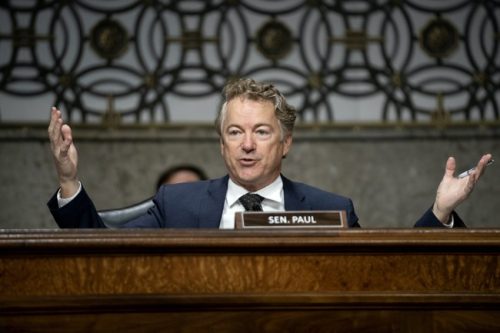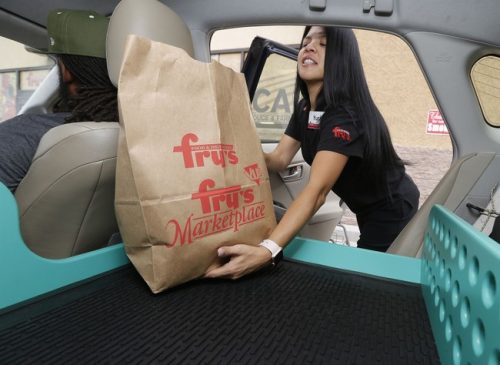The governor’s claim that every dollar of SNAP spending produces $1.50 in economic activity gets a close look here, with a focus on the politics behind the line, the math that doesn’t add up, and the fraud and abuse that undermine the argument.
The Democrats are scrambling to shift blame for the Schumer Shutdown, and a string of media reports point the finger back at their party while polls show Republicans gaining ground. That political backdrop matters because it helps explain why officials lean on talking points that don’t always stand up to scrutiny. The timing of these claims makes them look more like damage control than careful economic analysis.
Minnesota Governor Tim Walz has repeated the claim that SNAP spending generates more economic activity, but the math behind that statement is shaky at best. That doesn’t mean the program lacks value for needy families, but it does mean the simplistic multiplier talking point deserves skepticism. Political spin and sloppy math make a bad case worse.
That’s not how math works. If it did, what’s the argument against putting everyone on SNAP? The reality is that a dollar shunted through government programs does not automatically produce a fixed, reliable return in private economic activity. Context, leakage, timing, and incentives matter, and those factors get lost in a catchy sound bite.
According to Cato, most Americans believe that cutting the federal workforce and federal spending would increase economic activity:
Every $1 invested in SNAP generates $1.80 in economic activity.
It’s not about the money, Trump just wants Americans to go hungry.
— Governor Tim Walz (@GovTimWalz) October 28, 2025
Many see a bloated federal workforce as part of the problem as well: 51 percent believe the federal government employs too many workers, and they estimate that 34 percent of federal jobs are unnecessary. Accordingly, 62 percent support cutting the number of federal employees to reduce spending.
Americans also believe these cuts would bring broader economic benefits. Nearly two-thirds (64 percent) say reducing federal government spending would help the economy, compared to 22 percent who believe it would harm it. Few (14 percent) think cutting government spending would have no impact on the economy.
…
Americans are more unified in their approach to reducing the $2 trillion federal budget deficit. Nearly two-thirds (64 percent) want to focus either exclusively (49 percent) or primarily (15 percent) on spending cuts rather than on raising taxes. Only 15 percent want to exclusively (5 percent) or primarily (10 percent) raise taxes, while less than a quarter (22 percent) want to both cut spending and raise taxes equally.
If the Democrats’ defense is that SNAP recipients simply don’t have money for food and every federal dollar spent becomes private-sector demand, the $0.80 gap in the governor’s math still needs explaining. The claim that SNAP “frees up” other household income is the policy argument, but it doesn’t resolve how an extra 80 cents of private spending appears out of thin air. Political narratives can paper over those gaps, but voters notice when the numbers don’t reconcile.
The Center on Budget and Policy Priorities has called SNAP one of the fastest and most effective options for economic stimulus by freeing up household income for other goods and services, but footage and anecdotes complicate that tidy story. We’ve seen viral videos of recipients threatening violence if benefits are cut and of shopping carts overflowing with food bought on benefits paid for through electronic systems. Those images make simple multiplier claims look naive, not persuasive.
History also warns that government-led stimulus often produces inflationary pressure and distortion rather than clean, sustained private-sector growth. Pumping money into an economy can raise prices, including for groceries, so the short-term headline boost critics trumpet can fade quickly. That pattern matters when weighing long-term consequences against immediate optics.
Fraud is another real-world leak that erodes the argument SNAP is an efficient economic investment. A recent 54-page report from LexisNexis Risk Solutions highlights how fraud has accelerated and how costs to agencies climb when benefits are stolen:
According to the 2025 study, the average monthly rate of fraudulent SNAP applications and post-issuance cases has doubled since 2024. For every $1 in SNAP benefits lost to fraud, agencies now incur $4.14 in total costs, up from $3.93 a year ago.
“SNAP is a lifeline for millions of families, and these findings highlight how increasingly sophisticated criminals are targeting this critical benefit program,” said Amanda D’ Amico, Senior Director at LexisNexis Risk Solutions. “Digital channels and expanded eligibility systems improve access but also expand the attack surface. Agencies that leverage real-time data, identity verification, and digital authentication solutions to detect fraud and increase cross-program collaboration can turn the tide against fraud while ensuring timely benefits for those in need.”
A high-profile criminal case makes the risk concrete. An illegal immigrant from Italy, residing in Oregon, was sentenced for a multimillion-dollar SNAP/EBT fraud scheme, and the court record lays out how the theft worked and the penalties imposed. The details drive home that large-scale fraud not only steals benefits, it also imposes follow-up costs on agencies and taxpayers.
Giovanni Spirea, 29, was sentenced to 24 months in federal prison and three years of supervised release. He was also ordered to pay $61,874.32 in restitution.
Court documents say that from August 2023 to October 2024, Spirea and his co-conspirators used electronic skimming devices to steal Supplemental Nutrition Assistance Program (SNAP) benefits, encoded the stolen data on cloned Electronic Benefit Transfer (EBT) cards, and illegally purchased items with the stolen benefits.
“Protecting government funded programs, like the Supplemental Nutrition Assistance Program isn’t just about preserving funds – it’s about safeguarding trust in a vital lifeline that millions of families depend on to put food on the table,” said U.S. Attorney for the District of Oregon Scott E. Bradford. “Today’s sentencing should deter perpetrators from defrauding American families and the federal government for personal gain.”
SNAP is not an “investment” program, and treating it as a growth engine lets politicians avoid tough questions about targeting, fraud control, and long-term economic effects. Programs meant to meet basic needs deserve protection and integrity, but inflated multipliers do not substitute for honest policy debate.
The political incentive is clear: Democrats keep pushing the SNAP-is-growth line because it helps the party maintain wedge issues and voter sympathy amid the shutdown fallout. That calculation explains why the talking point persists even when the supporting math and evidence are weak.
That clip nails it. , Salmon wrote, “Although short-term impacts may boost output, long-term effects often diminish or turn negative due to reduced private investment and consumption, emphasizing the role of anticipatory effects and private-sector responses.”
“The 1.5x SNAP figure is not an “economic return”—it’s an inflated estimate policymakers should stop repeating,” he posted on X. Someone should tell that to Tim Walz.
Editor’s Note: The Schumer Shutdown is here. Rather than put the American people first, Chuck Schumer and the radical Democrats forced a government shutdown for healthcare for illegals. They own this.






